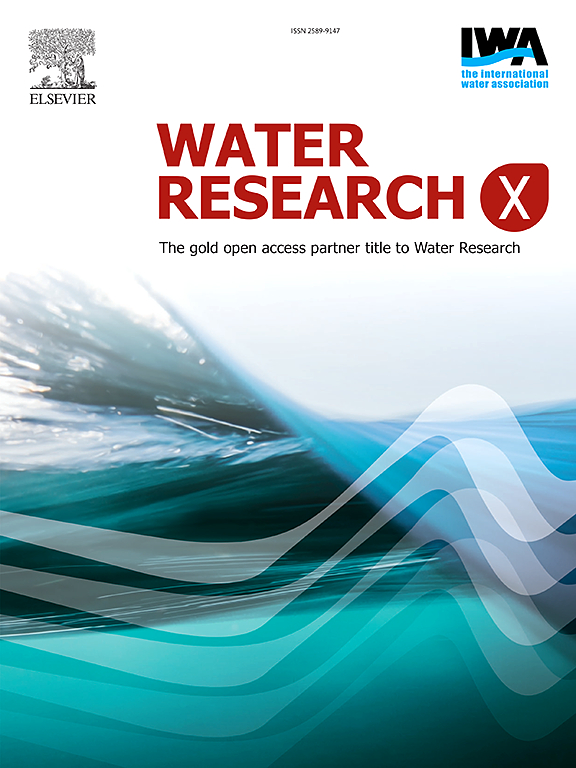Smaller sizes of polyethylene terephthalate microplastics mainly stimulate heterotrophic N2O production in aerobic granular sludge systems
IF 7.2
2区 环境科学与生态学
Q1 ENGINEERING, ENVIRONMENTAL
引用次数: 0
Abstract
Widespread polyethylene terephthalate microplastics (PET MPs) have played unintended role in nitrous oxide (N2O) turnovers (i.e., production and consumption) at wastewater treatment plants (WWTPs). Mainstream aerobic granular sludge (AGS) systems possess potentially strong N2O-sink capability, which may be reduced by PET MPs stress through altering N2O-contributing pathways, electron transfer, and microbial community structures. In this study, the effects of PET MPs with two common particle sizes of effluent from WWTPs (0.1 and 0.5 mm) on N2O turnovers, production pathways and N2O-sink capability were systematically disclosed in AGS systems by a series of biochemical tests and molecular biological means to achieve the goal of carbon neutrality. The results indicated that 0.1 mm PET MPs could more significantly stimulate N2O production in AGS systems by inhibiting denitrifying metabolism, compared with control and 0.5 mm PET MPs systems. Specifically, 0.1 mm PET MPs slightly increased the relative abundance of Nitrosomonas, reducing N2O yields via promoting the hydroxylamine (NH2OH) oxidation pathway during nitrification. Also, 0.1 mm PET MPs inhibited the electron transport system activities and the relative abundance of N2O reductase, hindering N2O reduction during denitrification. Most importantly, 0.1 mm PET MPs more apparently reduced the N2O-sink capability based on the ratio of N2O reductase gene and nitrite reductase gene.

求助全文
约1分钟内获得全文
求助全文
来源期刊

Water Research X
Environmental Science-Water Science and Technology
CiteScore
12.30
自引率
1.30%
发文量
19
期刊介绍:
Water Research X is a sister journal of Water Research, which follows a Gold Open Access model. It focuses on publishing concise, letter-style research papers, visionary perspectives and editorials, as well as mini-reviews on emerging topics. The Journal invites contributions from researchers worldwide on various aspects of the science and technology related to the human impact on the water cycle, water quality, and its global management.
 求助内容:
求助内容: 应助结果提醒方式:
应助结果提醒方式:


